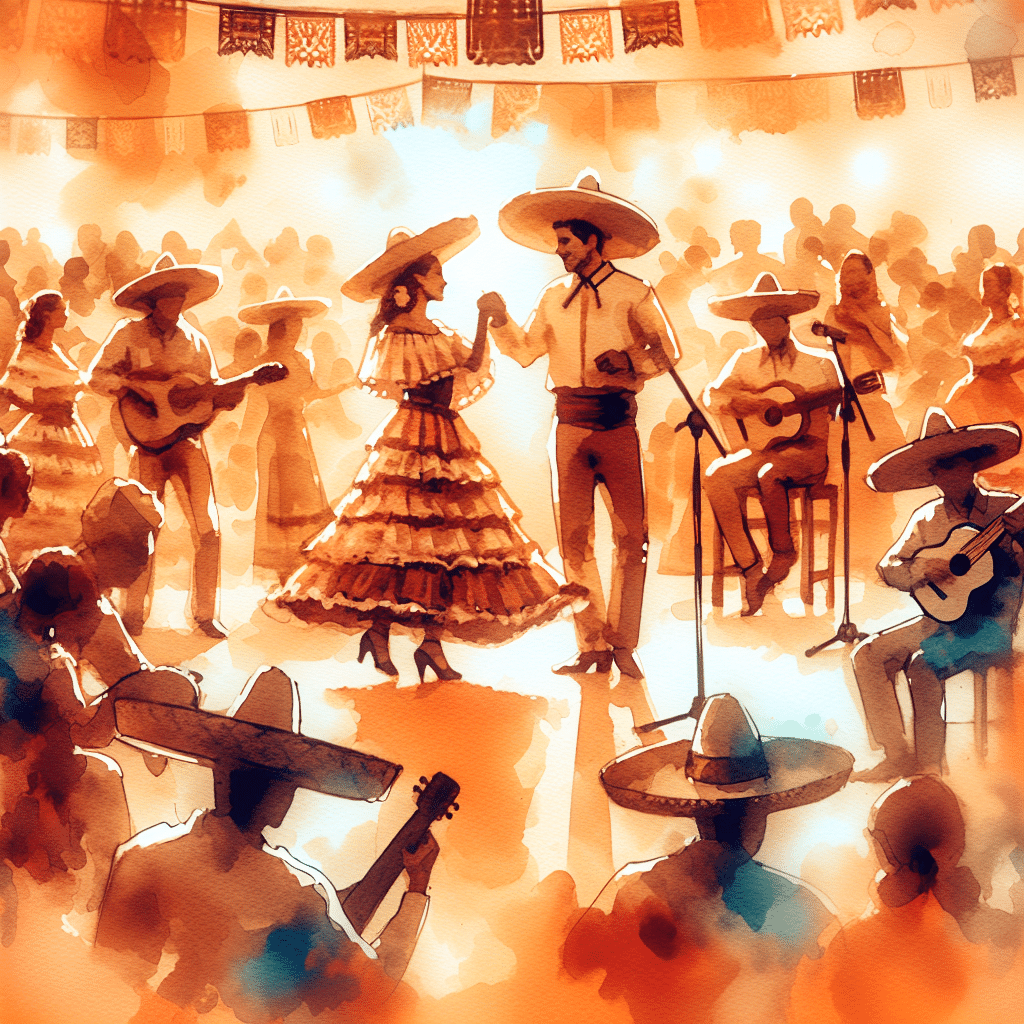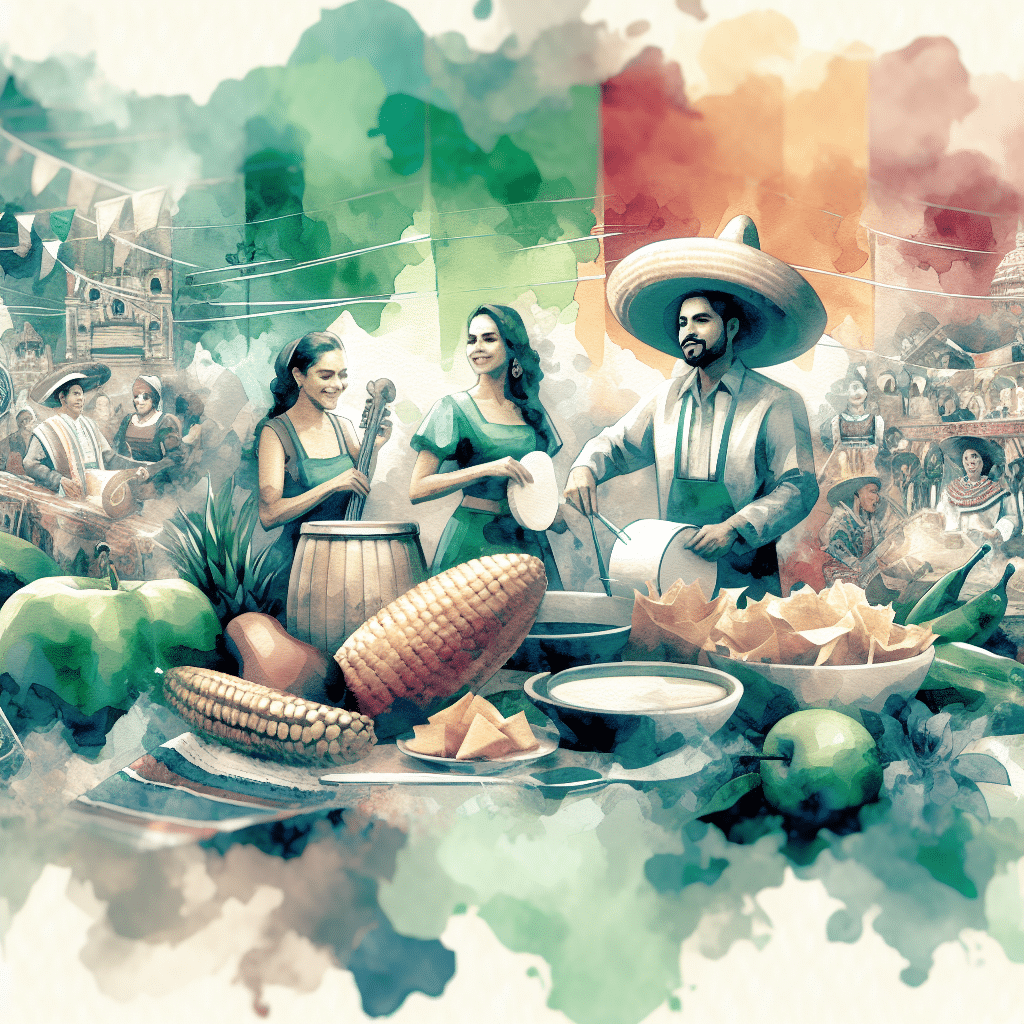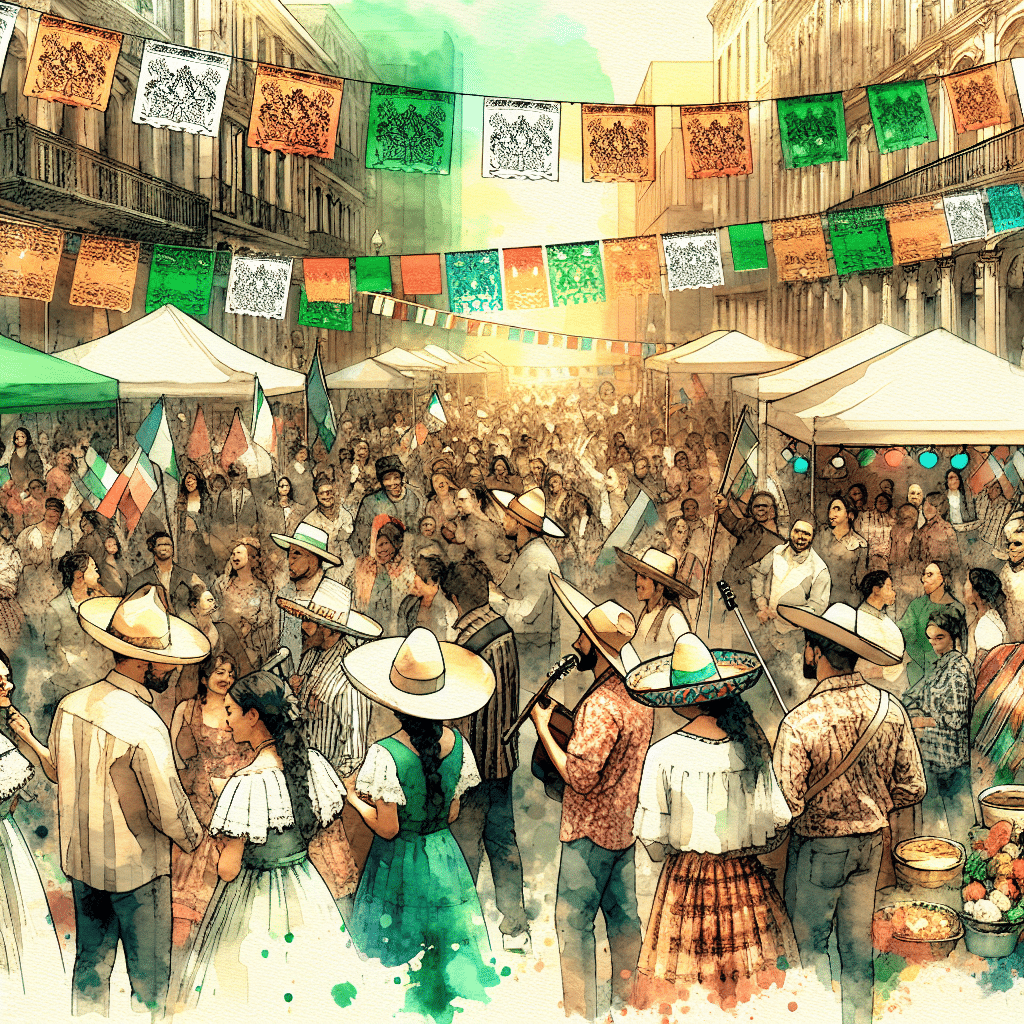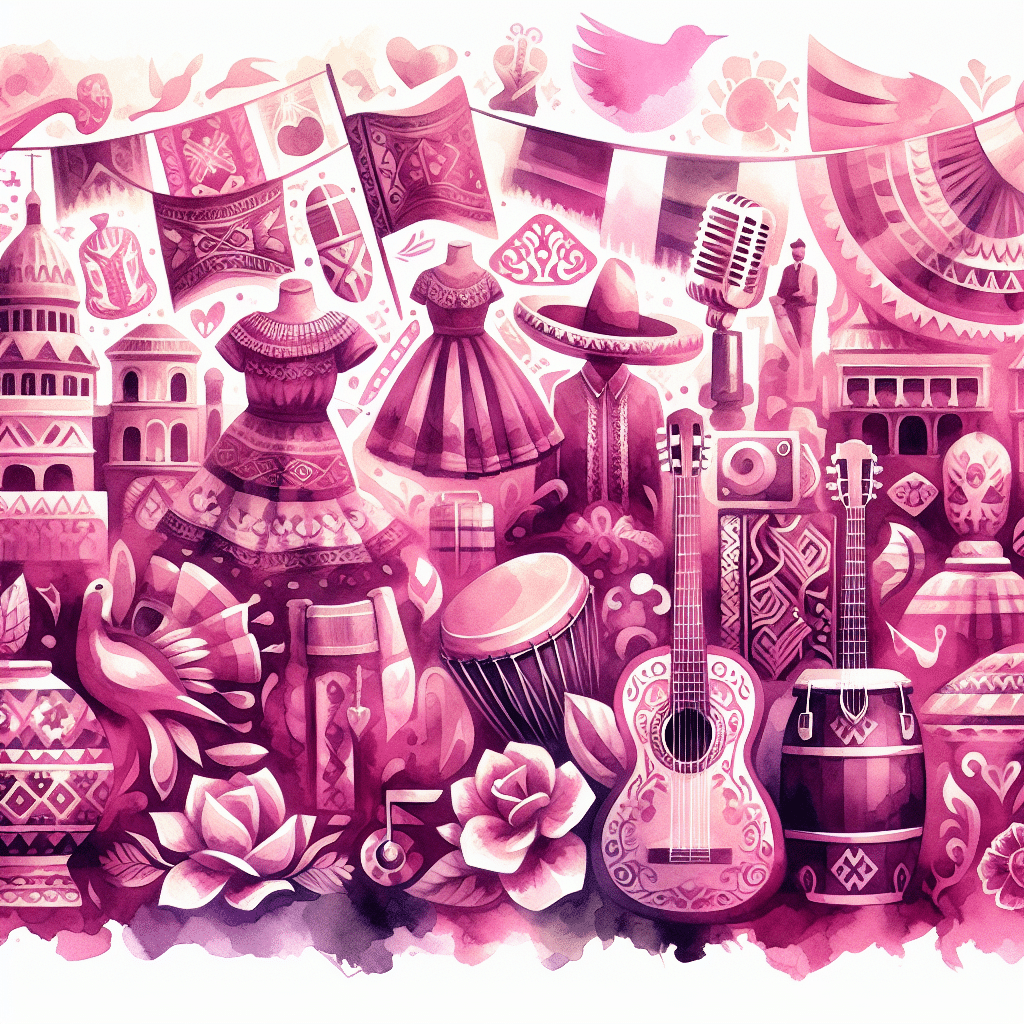
Latino Heritage: Celebrating the Impact on American Culture and Traditions
Latino Heritage and Traditions
Impact on American Culture
Latino culture has left its lively mark on American life, weaving its rich heritage into the fabric of everyday experiences. With over 60 million Latinas and Latinos in the U.S., their influence is everywhere (Smithsonian Latino Center). From food to fashion, their impact is clear.
Take music and dance, for example. Salsa and reggaeton aren’t just genres; they’re the heartbeat of many American parties. And let’s not forget the food—tacos, empanadas, and churros have become beloved staples.
| Area of Influence | Examples |
|---|---|
| Music | Salsa, Reggaeton |
| Food | Tacos, Empanadas, Churros |
| Arts | Muralism, Photography |
| Politics | Representation in Government |
But it doesn’t stop at entertainment and food. Latino culture has also made waves in sports, business, and politics. Figures like Supreme Court Justice Sonia Sotomayor have made groundbreaking contributions (Smithsonian Latino Center).
For more on how Latino culture shapes American life, check out our section on Hispanic culture and traditions.
Notable Latino Figures
The Latino community is full of remarkable individuals who have made their mark in various fields. These trailblazers not only excel in their domains but also inspire future generations.
Supreme Court Justice Sonia Sotomayor is a shining example in the legal world. Her journey from the Bronx to the highest court is a story of grit and determination.
In the arts, Roberto Lugo and Judy Baca stand out. Lugo, a potter and activist, and Baca, a muralist, use their art to highlight social issues and celebrate Latino heritage.
| Field | Notable Figures |
|---|---|
| Politics | Sonia Sotomayor |
| Arts | Roberto Lugo, Judy Baca |
| Entertainment | Lin-Manuel Miranda, Laura Aguilar |
| Sports | Dara Torres, Roberto Clemente |
Entertainment has its share of Latino stars too. Lin-Manuel Miranda, the mastermind behind “Hamilton,” has changed Broadway with his unique storytelling. Photographer Laura Aguilar captures the essence of Latino life through her powerful images.
For a closer look at these influential figures, visit our article on famous Hispanic Americans.
These individuals, along with many others, show the deep impact of Latino culture on American society. Their stories inspire and remind us of the rich, diverse heritage that continues to shape the nation.
Celebrating Latino Contributions
Latinas and Latinos have made a huge impact on America’s identity, shaping its culture in countless ways. With over 60 million Latinos in the U.S. today, their influence is everywhere, from arts to politics and beyond (Smithsonian Latino Center).
Latino Influence in Everyday Life
Latino culture has seeped into every corner of American life—food, sports, business, politics, science, education, and the arts. Salsa and reggaeton have everyone dancing, while tacos and empanadas have turned Taco Tuesday into a beloved tradition.
| Field | Notable Contributions |
|---|---|
| Arts and Entertainment | Lin-Manuel Miranda and photographer Laura Aguilar have pushed for more representation of people of color in entertainment (Smithsonian Latino Center). |
| Politics and Law | Supreme Court Justice Sonia Sotomayor shows how Latinas can reach the highest levels of the judiciary. |
| Sports | Athletes like Dara Torres have shown that Latinas can excel in competitive sports, making waves in the Olympics. |
| Fashion and Business | Designers like Carolina Herrera have brought Latino style to the global fashion stage, making elegance synonymous with Latino heritage. |
Want to know more about famous Hispanic Americans who have made their mark? Check out our article.
The Growing Latino Community
Latinos make up nearly 19% of the U.S. population, and by 2045, they’re expected to be almost a quarter of it. This growth isn’t just in numbers; it’s in influence across all aspects of American life.
| Year | Projected Latino Population (%) |
|---|---|
| 2020 | 19% |
| 2045 | 25% |
The community is evolving, blending its rich heritage with broader American culture. This mix is celebrated during Hispanic Heritage Month, highlighting the fusion of traditions and modern influences.
From salsa to sabor, Latino cultural events offer a vibrant tapestry of experiences that resonate with anyone who loves a mix of rich heritage and contemporary flair. For more on how these events shape American culture, check out our article on latino community celebrations.
Curious about the many ways Latinos have left their mark? Dive into our articles on latino film festivals and traditional latino dances for a closer look at the cultural vibrancy that defines this dynamic community.
Hispanic Heritage Month Overview
National Hispanic Heritage Month is a lively celebration that honors the rich history, culture, and contributions of Hispanic and Latinx communities. Let’s take a look at its historical roots and why it blossomed into a month-long fiesta.
Historical Significance
National Hispanic Heritage Month started as a week-long event. President Lyndon Johnson signed it into law in 1968 as Hispanic Heritage Week. The timing was no accident—it kicks off on September 15, the independence day for five Spanish-speaking countries: Costa Rica, El Salvador, Guatemala, Honduras, and Nicaragua (Unexpected Virtual Tours). So, it’s like hitting the jackpot of independence celebrations!
The goal was to celebrate and recognize the contributions of Hispanic Americans to the culture and history of the United States. From influential figures in politics, science, and the arts, the week aimed to highlight the profound impact of Hispanic heritage on American society (Quinnipiac Today).
Expansion to a Month-Long Celebration
Fast forward to 1988, and President Ronald Reagan decided that a week just wasn’t cutting it. Hispanic Heritage Week was extended to a month-long celebration, running from September 15 to October 15 (Unexpected Virtual Tours).
The expansion allows for a more in-depth celebration of the diverse nationalities, languages, and cultures that fall under the term “Hispanic.” The month-long celebration emphasizes diversity, inclusivity, and unity within the Hispanic and Latinx communities (Quinnipiac Today).
| Event | Date | Description |
|---|---|---|
| Hispanic Heritage Week | 1968 | Signed into law by President Lyndon Johnson |
| Hispanic Heritage Month | 1988 | Expanded by President Ronald Reagan |
During this month, educational opportunities are everywhere. Schools, colleges, and communities offer programs, exhibitions, and performances to educate folks about Hispanic and Latinx history and culture (Quinnipiac Today). It’s a time for everyone to dive into the richness of Hispanic traditions and recognize the countless contributions to American society.
For more details on the festivities and activities that take place during this month, check out our section on Hispanic Heritage Month activities.
Whether through cultural festivals, parades, or virtual celebrations, Hispanic Heritage Month is a lively reminder of the vibrant Latino culture that enriches the American tapestry. Embrace the unity, diversity, and educational opportunities this month offers and celebrate the Latino heritage with pride.
Festivities During Hispanic Heritage Month
Hispanic Heritage Month, running from September 15 to October 15, is a lively time to honor Latino culture. From bustling festivals and parades to creative virtual events and team activities, there are plenty of ways to dive into the rich traditions of the Latino community.
Cultural Festivals and Parades
Latino celebrations wouldn’t be complete without the colorful festivals and parades that light up cities across the U.S. These events are a sensory delight, packed with music, dance, food, and art that showcase the vibrant Latino culture.
Festivals: Cities like Los Angeles, Miami, and New York throw grand festivals with live performances by Latino artists, traditional dances, and mouth-watering food. You can dance to salsa, merengue, and other traditional Latino dances while enjoying authentic dishes from various Latino cuisines.
Parades: Parades are a major highlight, featuring floats, costumes, and performances that celebrate Latino heritage. Participants often dress in traditional attire and wave flags from their countries, creating a vibrant display of cultural pride.
These events not only entertain but also build a sense of community, allowing people to celebrate their roots and share their culture with others.
Virtual Celebrations and Team Building
In today’s digital world, celebrating Hispanic Heritage Month has gone beyond physical gatherings. Virtual celebrations offer a unique and accessible way for people to engage with Latino culture, no matter where they are.
Virtual Field Trips: Platforms like Unexpected Virtual Tours offer virtual trips to historic Hispanic communities in places like St. Augustine, Florida, and Austin, Texas. These tours provide insights into the impact of Hispanic culture on American society, exploring topics like Latinx entrepreneurs, creators, and musicians.
Virtual Potlucks: Hosting a virtual potluck lets teams share their favorite recipes, restaurants, and dishes. This activity fosters connection and conversation, enabling participants to bond over shared culinary experiences and cultural traditions.
Educational Programs: Hispanic Heritage Month offers unique educational opportunities for schools, colleges, and communities. Programs, exhibitions, lectures, and performances educate people about Hispanic and Latinx history and culture, promoting a deeper understanding of the contributions and challenges faced by these communities (Quinnipiac Today).
Team Building Activities: Virtual team-building experiences can include interactive sessions where participants learn about the preferred terminology during Hispanic Heritage Month, such as the difference between “Latino” and “Hispanic.” Engaging in these activities helps promote inclusivity and understanding within teams.
For more on how to celebrate, check out our page on Hispanic Heritage Month activities.
Table of Popular Hispanic Heritage Month Events
| Event Type | Popular Locations | Key Features |
|---|---|---|
| Festivals | Los Angeles, Miami, New York | Live performances, traditional dances, culinary delights |
| Parades | New York, Chicago, San Antonio | Floats, traditional attire, cultural pride displays |
| Virtual Field Trips | St. Augustine, Austin | Historical insights, impact on American culture |
| Virtual Potlucks | Online | Recipe sharing, culinary discussions, cultural bonding |
| Educational Programs | Schools, Colleges, Community Centers | Exhibitions, lectures, performances, historical education |
| Team Building Activities | Online | Terminology sessions, interactive learning, promoting inclusivity |
For more information on Latino cultural events and how to celebrate, visit our pages on Latino Heritage Month and Latino Traditions and Customs.
Hispanic Holidays and Traditions
Celebrating Latino cultural events is a fantastic way to embrace the rich heritage and traditions that shape the community. Two standout holidays are Cinco de Mayo and Día de los Muertos, each with its own unique vibe and customs.
Cinco de Mayo: More Than Just Tacos and Tequila
Cinco de Mayo, celebrated on May 5th, is a big deal in Mexico and among Mexican communities in the U.S. It marks the Mexican victory over the French army at the Battle of Puebla on May 5, 1862. This day is all about Mexican resilience and pride (English to Spanish Raleigh).
A lot of folks mix it up with Mexican Independence Day, which is actually on September 16. Cinco de Mayo is more about celebrating Mexican culture and heritage, especially in the U.S. where it’s a day to honor Mexican traditions, music, and food. Think vibrant parades, mariachi bands, and endless plates of tacos and guacamole.
Día de los Muertos: A Celebration of Life and Death
Día de los Muertos (Day of the Dead) happens on November 1st and 2nd, mainly in Mexico but also across Latin America and Hispanic communities worldwide. This holiday blends indigenous Mesoamerican traditions with Catholicism, honoring deceased loved ones with ofrendas (offerings), calacas (skeletons), calaveras (skulls), and traditional foods like Pan de Muerto and sugar skulls (English to Spanish Raleigh).
It’s a colorful and joyous occasion, not a sad one. Families create elaborate altars with photos, favorite foods of the deceased, marigold flowers, and candles to guide the spirits back to the living world. This festival showcases the richness of Mexican culture and its enduring appeal worldwide, making it a key highlight in the array of Latino cultural events.
| Holiday | Date | Significance | Customs |
|---|---|---|---|
| Cinco de Mayo | May 5th | Mexican victory over the French at the Battle of Puebla | Parades, music, traditional Mexican food |
| Día de los Muertos | November 1st and 2nd | Honoring deceased loved ones | Ofrendas, calacas, calaveras, traditional foods like Pan de Muerto |
For more insights into the vibrant celebrations and traditions of the Hispanic community, check out our articles on Hispanic Heritage Month activities and Latino traditions and customs.
Embracing Diversity and Unity
Latino cultural events aren’t just about lively festivals, delicious food, and dance moves that get you grooving. They also offer a chance to embrace diversity and bring people together. Let’s see how educational opportunities and promoting inclusivity play a big part in this.
Learning Opportunities
National Hispanic Heritage Month is a treasure trove of learning. Schools, colleges, and communities can use this time to teach about Hispanic and Latinx history and culture. Think programs, exhibitions, talks, and performances that highlight the contributions and struggles of these communities.
For example, virtual team-building experiences can introduce you to Latinx entrepreneurs, creators, and musicians. Imagine a virtual trip to St. Augustine, Florida, or Austin, Texas, to explore Hispanic communities and their musical impact on American culture.
| Activity | Description |
|---|---|
| Exhibitions | Showcasing Hispanic art and history |
| Lectures | Talks by notable Latino figures |
| Performances | Dance and music reflecting Latino heritage |
| Virtual Field Trips | Exploring Hispanic communities and culture |
For more ideas on celebrating this month, check out our Hispanic Heritage Month activities.
Promoting Inclusivity and Understanding
National Hispanic Heritage Month isn’t just about fun and festivities. It’s about promoting inclusivity by fostering a sense of belonging among Hispanic and Latinx Americans. This celebration encourages sharing cultural heritage and educating others about their traditions. Inclusivity strengthens American society by embracing its multicultural identity (Quinnipiac Today).
By joining Latino community celebrations, people from all backgrounds can better understand Hispanic culture and traditions. This promotes unity and mutual respect.
Here are some ways to promote inclusivity and understanding:
- Workshops: Host workshops that focus on Hispanic culture and traditions.
- Cultural Exchange Programs: Encourage cultural exchanges to foster understanding and appreciation.
- Community Events: Organize community events that celebrate Latino heritage and invite everyone to join.
To learn more about Hispanic culture and traditions, visit our page on Hispanic culture and traditions.
By embracing diversity and unity, we can make Latino cultural events not just memorable, but also meaningful for everyone involved.




